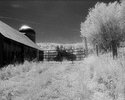Pixophrenic
Member
To all those claiming that 1l kits are too large&expensive, and they want a Rodinal like concentrate for C-41/E6/Kodachrome: these kind of concentrates have long been sought for, even during high times of analog photography. Their nonexistence tells me that they are not feasible, period. Also note, that no one in the photographic industry will put much effort into a "I may process 5 rolls/year" customer base. Those who expose less than 10-20 rolls per year are really better served by pro labs, not just in terms of cost, but also because they will hardly gain the experience to reliably process these few rolls.
Rudeofus, with all due respect, do you even listen to what you are saying? Next time you will be arguing that space travel is unworthy because it has failed before. You crammed so many fallacious and exaggerated statements in one post, I do not know where to start. The technology of concentrated C41 chemistry is out there, but right now the problem is that the industry is unsure which way it goes. I think what has changed lately, is that (thanks to forums like this one) we have a lot of more educated and discerning users than before, but big companies may not realize that. You, for one, is still beating this old drum about "pro" labs. In my case, it is only a lab in the neighborhood which runs a processor once in 10 days, operated by a generalized Mrs Smith. I need to spend money on transportation or postage to reach a lab that is close to "pro" and even then I can't be sure that when my film gets in the post it will not be abused. You may be better positioned, but I am sure there are increasing numbers of people like me. Besides, I do not see why mixing color developer should be so special. Like myself, I see on this forum people who use scales, stirrers and.. gosh... even measure pH.







